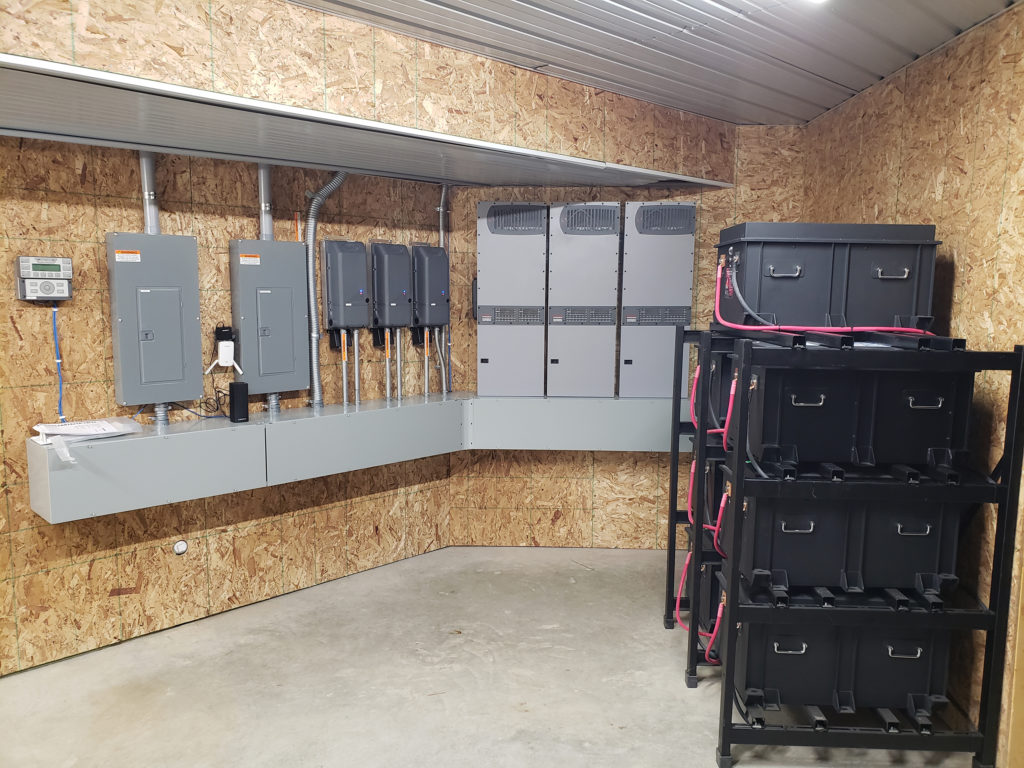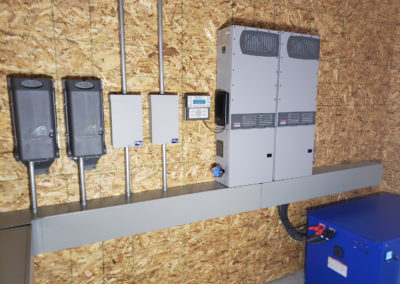Energy Independence
Prepare for the Unknowns
Battery Systems
Independence from the Grid
When the power goes out be prepared with a grid-hybrid system from Dogwood Solar.
Traditional grid-tied solar systems require connection to a powered electric utility grid in order to operate. Fully off-grid solar systems are completely independent of public utilities and use batteries and/or generators to cover nights or other times when electric use exceeds solar panel output. With a grid-hybrid system now you can opt to enjoy the benefits of a grid-tied system when the electric utility is operating and benefit from the increased security and independence of battery backup when there is a utility power outage. Battery backup power does not require fossil fuels, making it a simple and eco-friendly alternative to gas or propane generators.
We offer battery options to power your whole house or to protect partial loads such as your internet connection, security system, refrigerator, deep freeze, or other appliances. Contact us today to schedule an appointment for a free consultation here.

Are grid-hybrid and off-grid systems eligible for the Federal Tax Credit?
Yes! As long as the batteries are charged from solar, you can take advantage of the tax credit for these systems. *Please consult your tax advisor regarding your specific circumstances.
What are days of autonomy?
Autonomy refers to the number of days your grid-hybrid or off-grid system can operate while running the desired loads without additional charging from solar. More days of autonomy gives more freedom but requires more energy storage. Determining the right number for your system will balance cost and performance for a solution that is right for you.
What battery maintenance is required?
Lithium Iron and sealed lead-acid batteries require no routine maintenance. Flooded lead-acid [FLA] batteries require routine analysis of the electrolyte health and water levels in the batteries. FLA battery banks also require periodic equalization charging to optimize battery bank health.
How many batteries will I need?
Great question, the answer depends on your needs. We will take the time to do a detailed load analysis and provide pricing and performance for the different battery capacity options.
Select The Right System for You
What are the differences between grid-tied, back-up, and off-grid battery systems you ask?
Grid-Tied ($)
- Works while the electric utility grid is operational.
- All the energy produced by the solar system is used onsite first. Excess energy is sent to the grid and credited on your monthly utility bill.
- During a power outage, solar panels shut down to protect electric utility line workers.
- System design is simplified and based on monthly energy use.
Back-up System ($$)
- A growing number of our clients are opting for some energy storage for increased security and independence.
- Supports limited functions and energy usage from the stored energy when there is a power outage.
- Can be a small, medium, or large backup system based on your needs.
- The energy storage can be charged from the grid, solar, or both.
- Solar panels continue to operate while the electric utility grid is down.
- System design is more complex and based on the desired protected loads, their electrical characteristics, frequency of use, and the number of days of autonomy desired.
Off-Grid ($$$)
- No reliance on the grid but the grid can be utilized if it is present.
- Supports full functionality independent of grid conditions.
- System design is complex. Inverter and battery capacity design is critical and typically includes a stand-by generator to charge the batteries to increase days of autonomy, security, and independence.




